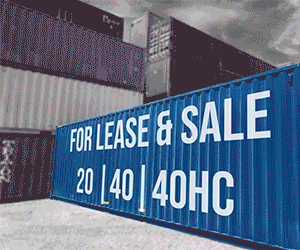In a first-person narrative, Tim Scharwath, CEO, DHL Global Forwarding, examines the parameters and factors relating to the what and why of lifting customer contentment to pre-pandemic standards in the face of the onslaught wrought by the pestilence.

We are almost two years into the Coronavirus pandemic. The logistics industry has proven how essential it is for our global economy and stability in supply with commodities and goods. Further, it has confirmed its important role in fighting the pandemic itself, transporting medical equipment, PPEs, medicines, and of course, vaccines.
At DHL alone, we transported 1.6bn doses of vaccines to 174 countries globally as of today, while many other logistics suppliers also transported similar quantities themselves.
We usually operate behind the scenes, but the pandemic catapulted logistics into the spotlight. Suddenly, it became visible how vital and critical our work can be, especially for the many unsung heroes working days and nights, weekends, and holidays to ensure that the shelves are not empty; this was a justified recognition.
This, of course, it is a great success story. But the truth is, there is always room for improvement. That is why we, as managers and leaders in the logistics industry, need to reflect on issues. This is how we can learn and get better – delivering excellence.
Customer service deterioration
My first observation is that customer satisfaction across the industry has currently deteriorated. Customer satisfaction is our license to operate. And many factors have to be suitable for it to work. Besides the actual delivery, it’s also about the service alongside it.
We are currently observing that the price is disconnected from the service available. Capacity is tight both in air and ocean freight. In ocean freight, we saw up to 90 vessels and more queuing at the port of Long Beach and Los Angeles.
Capacity and equipment were stuck, which was urgently needed in other parts of the world. This is partially driven by disruptions caused by the Corona pandemic, such as temporary, regional lockdowns. Although, schedule reliability at ocean freight slightly improved in the last two months, with approx. 34 percent is still far below the limit that we usually anticipate.
The same applies to air freight. As passenger airlines still haven’t returned to their pre-corona flight schedules, essential belly capacity is still missing.
Rebounding economy
There are many reasons for this, and we must not simply hold the pandemic responsible for it. For instance, we have experienced a rebounding economy, and infrastructural issues that have also had a significant impact on the situation.
Although prices for logistical services are rising, the demand for such services is not decreasing. The gap between supply and demand is too big. The market no longer regulates it, therefore, we have to find other ways and solutions to relieve the system.
First of all, it needs further investments from the private and public sectors in the long term. Many big ocean carriers have already announced that they have ordered new vessels. We at DHL are also investing in new airplanes, trucks, and gateways, with a focus on sustainability, such as Sustainable Aviation Fuel and other alternative fuels, as well as the electrification of last-mile delivery.
We must also continue to drive forward the digitalization of the industry and improve the data availability and quality across the industry. Uniform standards should be implemented globally for certain data, for instance bill of lading or customs data. This would not only result in increased transparency but also higher efficiency for all parties involved.
Predictive ETA solutions
We are currently working on a predictive ETA (Expected Time of Arrival) solution based on machine learning, which will be able to estimate the date of arrival more precisely than the ETA provided by the carriers.
These are of course only a few examples, others still need time especially when it comes to physical infrastructure, which customers will only benefit from in the long term. However, when, if not now, is the right time to tackle these issues?
Additionally, we need to address customer satisfaction in the short- and mid-term. And as already mentioned, the critical element here is customer service. From my point of view, freight forwarders are ideally positioned, as they have the flexibility, agility, and network to address such volatile and challenging market conditions as the ones we are currently facing.
With the right portfolio of solutions, we can mitigate capacity crunches by, for instance, offering multimodal transport solutions, where we combine ocean, air, and road as well as rail services.
Specific market conditions
By having experts across the globe that know the specific market conditions in the countries and regions customers are operating in, we can offer stable capacity supply and reasonable conditions through long-term partnerships with carriers.
Furthermore, with the help of digital services, such as DHL’s digital customer platform, myDHLi, customers can know where their shipments are and can share the status with colleagues or partners at every point in the transport chain. This allows immediate action if needed and eases planning, namely for production. With the dedication and hard work of everyone involved in the logistics industry, we can keep supply chains up and running even in times of crisis.
Want to stay updated on the latest industry news and trends? Subscribe today to receive your monthly news highlights directly in your inbox!










